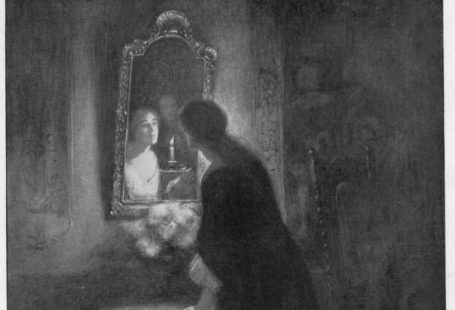In March 1935 the seaside resort town of Bournemouth was shaken by a sensational murder. Retired architect Francis Mawson Rattenbury, aged 67, was found dead at his home, Villa Madeira, on Manor Road. Accused of his murder were his younger wife Alma Rattenbury, and her lover, 18-year-old gardener George Stoner.
This case would end in further tragedy, and in this special blog, using pages from the British Newspaper Archive, we explore how murder came to the genteel town of Bournemouth in the March of 1935.
Want to learn more? Register now and explore The Archive
Bournemouth | The Sketch | 10 October 1956
On 10 May 1935, a rather innocuous announcement appeared in the Derby Daily Telegraph:
Mr Francis Mawson Rattenbury, of Manor-road, Bournemouth, retired architect, who died on March 28, has left estate valued in England at £502.
But the truth behind these few lines was something altogether more sinister. Mr Francis Mawson Rattenbury, retired architect, had not just died on March 28, he had been murdered. Local Bournemouth title, the Bournemouth Graphic, on 6 April 1935 reveals how the death of Rattenbury was now ‘the subject of criminal proceedings,’ causing the inquest to be adjourned to 27 June 1935.
Francis Rattenbury | Sunday Independent (Dublin) | 28 February 1988
The article reports on the evidence of police surgeon Dr Harold Simmons, who ‘found that the cause of death was laceration of and hemorrhage and into the brain and into the skull, the result of a compound fracture of the skull produced by injuries.’ In short, he had been hit round the head with a heavy object, later proven to be a carpenter’s mallet.
Appearing at the brief inquest were Rattenbury’s widow, Alma (37) and his chauffeur/gardener George Percy Stoner (18). Both had been remanded by police, and Alma appeared ‘sleepless and disturbed,’ in the company of a wardress. Stoner, meanwhile, ‘was smartly dressed in a grey suit and white colour, his fair hair brushed well back from the forehead. He was pale but seemed well composed.’
On 24th April 1935 the Nottingham Journal reports that both Alma Rattenbury and George Stoner were committed for trial, charged with the murder of Francis Rattenbury. Both Alma and George Stoner stated themselves ‘not guilty’ of the charge.
Alma Rattenbury | Daily Herald | 17 April 1935
So what had happened that March night at the Villa Madeira? The Sunday Independent (Dublin) looks back at the case some fifty years later. Francis Rattenbury had been found dead in his chair, and PC Arthur Bagnell, when attending the scene, was met by Alma Rattenbury, who exclaimed: ‘I did it, with a mallet…No, my lover did it.’
For Alma and George Stoner, some twenty years her junior, were conducting a passionate affair under the roof of Villa Madeira. Alma had advertised during the previous year for a ‘willing lad‘ to help with the housework; ‘good-natured and honest‘ George Stoner took on the role. Three months later Alma seduced him.
The case moved to trial, where Alma testified that ‘Stoner had killed Rattenbury; his motive was to prevent an intended trip away from home in which husband and wife would be obliged to share a bedroom.’ George Stoner did not plead guilty however, nor did he point the finger at Alma. In the end, Alma was acquitted, and he was found guilty, sentenced to hang.
George Percy Stoner | Daily Herald | 25 June 1935
Sadly, more tragedy was in store for the Rattenburys. Alma, distressed at the verdict, took her own life several days later. According to the Gloucestershire Echo, she was ‘found dead in the River Stour at Christchurch, near Bournemouth.’
Eyewitness William Charles Mitchell, a cowman, gave the following account of Alma’s last moments, as reported in the Western Gazette:
As I approached the railway line I saw the deceased sitting on the bank which passes beneath he line. She was smoking a cigarette and alone…I saw the deceased then standing by the water’s edge. She bent down and I saw that there was a knife in her hand. She then appeared to fall into the water.
Despite Mitchell’s best efforts to save her, Alma passed away from six self-inflicted stab wounds. Driven to desperation by Stoner’s death sentence, and vilified by the public who were desperate to paint her as a scarlet woman, Alma took her life, writing in a note (later found in her handbag) to the governor of Holloway Prison: ‘If I only thought it would help Stoner I’d stay on, but it has been pointed out to me too vividly I cannot help him, and that is my death sentence.’
Gloucestershire Echo | 5 June 1935
Alma Rattenbury’s funeral, as reported in the Bournemouth Graphic, was attended by 3,000 people, ‘the great majority of whom were women.’ And whether these women attended out of voyeuristic curiosity, or out of solidarity for the tragic figure, it is not clear, but the attendance was markedly different to the funeral of her husband, which was attended by ‘only a few,’ including his nephew and his household staff.
There was to be one more twist in the tale. Stoner’s sentence was lessened to a life term, and he was released to serve in the Second World War. He later married, and passed away in 2000, having stated that it was indeed Alma who had killed her husband in 1935.










